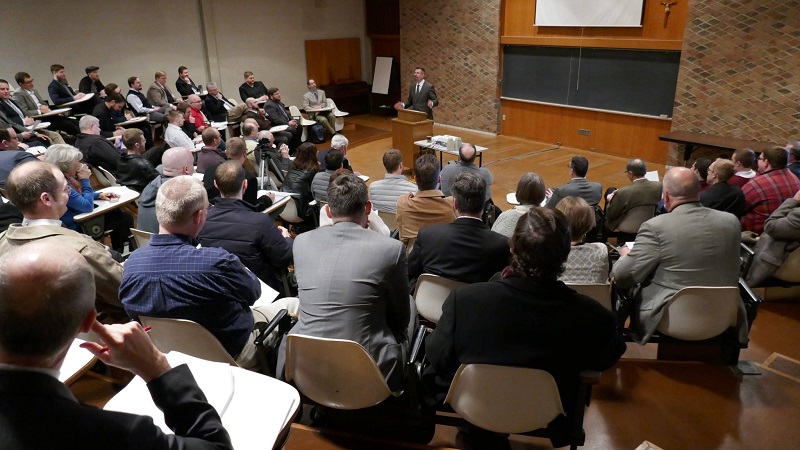
Dr. Pulse led Convocation Hour today after chapel, lecturing on his dissertation topic “Death and Resurrection Motifs in the Old Testament.” Associate professor of Exegetical Theology, Dr. Pulse successfully completed his PhD program at the University of Durham in England only a few months ago.
His lecture began with how we must read the Bible as a unified, theological narrative; that Scripture is one story, with Jesus Christ at the center. Thus the motifs (a fancy word for themes) that begin in Genesis weave through both Old and New Testaments and are brought to complete fruition in Revelation. When you understand the story that is being told, you can read backwards again into the Old Testament and see where Christ is, even when He is not explicitly named. One example of this is God covering Adam and Even with animal skins after their fall into sin, beginning the major motif of sacrificial atonement.
Dr. Pulse’s doctoral studies particularly focused on Joseph in Genesis, and the Christological themes of death and resurrection throughout (there are fourteen in all, such as three day/stage separation and restoration, barren womb and opening of the womb, being cast into the pit/Sheol and being raised/lifted up, famine and deliverance, stripped and clothed, etc.). Ultimately, the lesson to be drawn from Joseph is not “forgive your brothers and you’ll be blessed,” but a lesson about Christ and His mercy.
“There is a danger in appropriating Scripture for yourself,” Dr. Pulse said. Though he acknowledges that this can be a good thing when done correctly, he went on to explain: “We put ourselves in the wrong place in the story.”
When you put yourself in the place of Joseph, you take the Messianic role and cut Jesus out. As another example, this is imagining yourself as David in the story of David and Goliath, and turning it into a moral and ethical lesson about how trusting God no matter what will bless us. Rather, we are the people of Israel, wetting ourselves every time Goliath comes out and taunts us. When you understand that Christ is at the center of every story, then it’s clear that this is instead another lesson about the One who has become sin for us; the One who delivers us.
